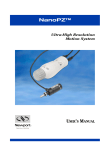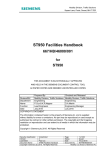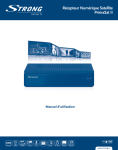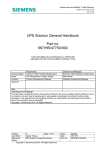Download Operating Instructions TC-gateway 1290 00 -
Transcript
Operating Instructions
TC-gateway
1290 00
Table of contents
On these operating instructions .......................................................................... 5
Range of functions ............................................................................................... 6
DTMF, R key, flash times ...................................................................................... 7
Illustration of device ............................................................................................. 8
Installation and connection .................................................................................. 9
Use on analogue telephone connection ............................................................. 10
Information on operation on analogue telephone connection............................ 11
Use on a telephone system ................................................................................ 12
Information on operation on a telephone system............................................... 13
Commissioning
Commissioning and operation via telephone ..................................................... 14
Signal and acknowledgement tones .................................................................. 15
Commissioning via programming set................................................................. 15
Basic commissioning procedure ........................................................................ 16
Setting of exchange/extension connection ........................................................ 17
Assigning door-station call button to TC-gateway ............................................. 18
Assigning switching actuator function............................................................... 21
Telephone number variants/answering machine function .................................. 23
Entering telephone number in telephone book .................................................. 25
Setting local calling time .................................................................................... 27
Setting external calling time ............................................................................... 28
Setting door conversation time .......................................................................... 29
Changing PIN ..................................................................................................... 30
Resetting to factory setting ................................................................................ 31
3
Operation
Speaking with door station ................................................................................ 32
Opening door...................................................................................................... 33
Alternating between lines................................................................................... 35
Entering/changing/deleting master call-forwarding number .............................. 36
Master call forwarding off/delayed/immediately ................................................ 37
Variant switchover .............................................................................................. 38
Running switching actuator function ................................................................. 39
Application examples
Single-family house ............................................................................................ 40
Multi-family house.............................................................................................. 42
Multi-generation house ...................................................................................... 45
Table for start-up documentation ....................................................................... 48
Overview of DTMF codes - for connection to TLN (DCS) ................................... 49
Overview of DTMF codes - for connection to telephone system ....................... 50
Technical data.................................................................................................... 51
Warranty............................................................................................................ 51
4
On these operating instructions
The following symbols are used in these instructions:
1. Action instructions are numbered consecutively.
✓ Results of actions are identified by this check mark.
In addition, the instructions for action are shown in the left-hand
column with symbols:
Symbol
Meaning
Pick up receiver/hang up receiver
You hear a signal on the telephone, e.g. the
exchange tone or the command tone of the
TC-gateway.
Press the function key shown, e.g. here the
"star" on your telephone
Enter a number combination via the telephone
keypad, e.g. your PIN.
Press the number key shown, e.g. here the "3"
on your telephone.
Press the R key on your telephone (also see
Page 7).
5
Range of functions
The TC-gateway is the connection between the Gira door
communication system and the telephone connection. The
TC-gateway is attached either to an analogue telephone
connection (exchange a/b) or the analogue extension station of
a telephone system.
In the main function, door station calls are forwarded to the
devices of the TC-gateway. After accepting a call, voice and
switching functions of the door communication system can be
used. In the opposite direction, the TC-gateway can be called by
telephone. After acceptance of the call by the TC-gateway, a
voice connection to the door stations can be established. In
addition, switching functions or operating procedures for
configuration of the TC-gateway can be carried out.
Telephoning
All telephone functions (accepting or conducting outside calls)
can be used with the TC-gateway without dialling special
prefixes.
Comfort features, such as the display of the caller's number
(CLIP), alternating between lines or the operation of an external
answering machine (e.g. T-NetBox), are supported.
6
DTMF, R key, flash times
DTMF (Dual Tone Multi Frequency), also called tone dialling or
DTMF (dual-tone multifrequency signalling), is used for dialling
in telephone equipment. The DTMF signal consists of tones
generated by the telephone keypad. The Gira TC-gateway is
operated with DTMF tones.
Depending on the manufacturer, the R key is referred to as the
internal refer-back or signal key, and in some cases also as the
flash key or hook flash. Please refer to the operating instructions
of your telephone to determine which key on your telephone is
the R key.
The TC-gateway detects flash times of 80 - 250 ms. A flash of
200 ms is generated by the TC-gateway.
7
Device presentation
The TC-gateway is a DIN rail-mounted device with six modules
and is mounted in the distribution on a top-hat rail.
/
/
IP 20
"Betrieb" ("Operation") LED
The green "Betrieb" ("Operation") LED signals the following
functions:
• LED lights up: Fault-free operating mode
• LED flashes:
Programming mode of
door communication system active
"TLN aktiv" ("DCS active") LED
8
The yellow "TLN aktiv" ("DCS active") LED lights up when a
conversation is conducted via the telephone connected to the
TLN a'/b' (DCS a'/b').
Installation and connection
The TC-gateway is equipped with the following connections
(also see illustration of device on Page 8):
BUS
The bus line from the Gira door communication system is
connected here.
Ub
Input for the supply voltage (12-24 V DC or 12 V AC).
The power supply is provided either via
• a door-communication control device (12 V AC),
• the power supply for door communication (24 V DC)
• or a common bell transformer.
Amt a/b (Exchange a/b)
The analogue telephone connection or the analogue output of a
telephone system is connected to these terminals.
TLN a'/b' (DCS a'/b')
An analogue telephone (with DTMF) is connected to this
connection.
9
Use on analogue telephone connection
10
Information on operation on analogue telephone connection
With use on an analogue telephone connection, an analogue
telephone is connected to the "TLN" ("DCS") port. All door calls
are forwarded to the connected telephone. It is also possible for
forward door calls to an external telephone number. A
conversation can then be held with the person at the door
station via the external telephone, and, if necessary, the door
can be opened.
11
Use on a telephone system
i
Enter number of extension telephones
The numbers of the telephones which are to signal a door call
must be entered in the telephone book of the TC-gateway.
12
Information on operation on a telephone system
When operating the Gira TC-gateway on the analogue extension
telephone of a telephone system, the range of features and the
behaviour of the individual devices depend on the telephone
system. For this reason, only general information on the
operation of the TC-gateway on a telephone system can be
provided here:
Do not connect a telephone to TLN a'/b' (DCS a'/b')
When operating the TC-gateway on a telephone system, no
telephone may be connected to the terminals TLN a'/b'
(DCS a'/b').
In extension operation, all door calls are forwarded via the
exchange terminal of the TC-gateway to the telephone system
and then distributed to the connected telephones from there.
Setting up collective call
So that all telephones ring at the same time in case of a door
call, you must enter the number of the collective call in the
telephone book of the TC-gateway (or as a master redirection
number). The collective call number is provided in the operating
instructions of your telephone system.
Commissioning and operation
To commission and operate the TC-gateway, you must "call"
the TC-gateway. The condition is that the TC-gateway is in the
"extension connection" setting.
Dial the number of the telephone system connection to which
the TC-gateway is connected. After the TC-gateway
has accepted the call, you hear the command tone of the
TC-gateway. You can now continue with the corresponding
operating steps.
13
Commissioning and operation via telephone
All settings and operating procedures can be carried out via a
DTMF-capable telephone connected to the TC-gateway or the
telephone system.
For the TC-gateway to evaluate the respective DTMF codes, it
must be switched into either the Command mode or the
Programming mode.
Command mode
In the Command mode DTMF codes can be entered for
operation, e.g. for switching over the variants.
The Command mode is started as follows:
• Following a door call: Pick up receiver
• From the idle state (telephone connection to TLN a'/b'
(DCS a'/b')):
Pick up receiver and press the R key within 5 seconds.
• From the idle state (connection to a telephone system):
Calling from an extension connection
You recognise the active Command mode from the command
tone (see table on Page 15).
Programming mode
Before carrying out commissioning steps, the Programming
mode must be started on the TC-gateway.
You start the Programming mode by entering the following
DTMF code in the active Command mode:
* 0 * PIN #
You recognise the active Programming mode from the
Programming mode signal (see table on Page 15).
14
If several commissioning steps are to be carried out
consecutively, the Programming mode need only be started
once. The TC-gateway remains in the Programming mode until
the telephone receiver is hung up.
Signal and acknowledgement tones
The TC-gateway signals its respective state with various tones:
Symbol
Sound
Meaning
Exchange tone
Normal exchange tone on picking up the
telephone connected to the TLN (DCS)
terminals.
Command tone
Command mode active;
the TC-gateway waits for an entry
Programming
mode signal
Programming mode active;
the TC-gateway waits for an entry
Continuous
acknowledgement tone
Acknowledgement tone: Previous action
successful
Pulsing
acknowledgement tone
Acknowledgement tone: Previous action
has failed
Commissioning via programming set
With the programming set available as an option, the
TC-gateway can be conveniently set up and configured. Details
are provided in the operating instructions included with the
programming set.
15
Basic commissioning procedure
Please proceed in the following order to commission the Gira
door communication system:
1. Install all devices of the Gira door communication system.
2. Assign the door-station call button(s) to the home station(s)
(see instructions for control device).
3. Program the door opener function(s)
(see instructions for control device).
4. Program the switching actuator
(see instructions for switching actuator).
5. Make the setting "Exchange connection"/"Extension
connection" on the TC-gateway (see Page 17).
6. Assign the door-station call button(s) to the TC-gateway
(see Page 18).
7. Program the switching actuator function (see Page 21).
8. Enter the telephone numbers in the telephone book if
necessary (see Page 23).
9. Change the settings of the call and conversation times if
necessary (see Page 27 ff.).
16
Commissioning - setting exchange/extension connection
Factory setting: Extension connection
For connection to TLN
(DCS):
For connection to tel. system:
1. Pick up the receiver.
1. Pick up the receiver.
✓ You hear the exchange
tone.
2. Press the R key.
✓ You hear the internal dial tone
of your telephone system.
2. Dial the TC-gateway.
✓ You hear the command tone of the TC-gateway.
3. Press the "star" key and enter the code number "0".
4. Press the "star" key, enter your PIN and confirm with the
"hash" key.
✓ You hear the Programming mode signal.
Switching between exchange/extension connection
5. Press the "star" key and enter the code number "3".
6. Press the "star" key and enter the code number for the type
of connection:
0 = Exchange connection
1 = Extension connection of telephone system (factory
system)
7. Press the "hash" key.
✓ You hear an acknowledgement tone, then the Programming
mode signal.
17
Commissioning - assigning door-station call button to TC-gateway
When assigning the call buttons, the door stations and the
individual call buttons must be assigned unique numbers.
These numbers can be assigned as desired. The door stations
can be given the numbers 1 - 9, and the call buttons the index
numbers 01 - 50. It is advisable to begin numbering with 1 and
then count upward for the door stations and call buttons.
For commissioning documentation, please use the table on
Page 48.
Example:
Call Button/
Name
Door station 1
e.g. main door
Door station 2
e.g. side door
18
Door
Station
Index
Top/3rd floor
1
01
Middle/2nd floor
1
02
Bottom/1st floor
1
03
Top/3rd floor
2
04
Middle/2nd floor
2
05
2
06
Bottom/1st floor
...
...
9
50
Starting Programming mode of door communication
system
1. Start the Programming mode at the control device by
pressing the "System pogr. " button for 3 seconds until the
LED next to the button starts flashing.
2. Press the call buttons at the door station for 3 seconds
each until you hear a short acknowledgement tone.
Important: Press the call buttons in the sequence in which
the telephone number entries will be assigned later.
✓ You will hear a long acknowledgement tone at the door
station.
i
Release call button after 3 seconds
If the button press is not ended after the first acknowledgement tone, all assignments of the respective door/home station
will be deleted after an additional 3 seconds.
Starting Programming mode on TC-gateway
For connection to TLN
(DCS):
For connection to tel. system:
1. Pick up the receiver.
1. Pick up the receiver.
✓ You hear the exchange
tone.
2. Press the R key.
✓ You hear the internal dial tone
of your telephone system.
2. Dial the TC-gateway.
✓ You hear the command tone of the TC-gateway.
3. Press the "star" key and enter the code number "0".
19
4. Press the "star" key, enter your PIN and confirm with the
"hash" key.
✓ You hear an acknowledgement tone, then the Programming
mode signal.
Assigning call button
5. Press the "star" key and enter the code number "2".
6. Press the "star" key and enter the number (single-digit,
e.g. "1") of the door station to be assigned.
7. Press the "star" key, enter the index number (two-digit,
e.g. "01") and press "hash" to end the programming step.
✓ You hear an acknowledgement tone, then the Programming
mode signal.
To assign additional call buttons if necessary, please repeat the
work steps 5 to 9.
8. Briefly press the "System progr." button on the control
device to end the Programming mode.
9. Carry out additional commissioning steps or end the
Programming mode by hanging up the telephone receiver.
20
Commissioning - assigning switching actuator function
You can control switching actuator functions by telephone. For
this purpose, the switching function is assigned to a telephone
key.
i
Number of switching actuators
The number of switching actuators that can be controlled by
telephone is dependent on the number of door stations. The
total number of all door stations and switching actuators may
not exceed 9. Example: If 2 door stations are installed, up to 7
switching actuators can be assigned.
1. Start Programming mode at the control device by
pressing the "System progr." button for 3 seconds until the
LED next to the button starts flashing.
✓ The last operating mode LED set flashes on the switching
actuator.
2. Press the "Function" button on the switching actuator
several times until the LED of the desired operating mode
flashes.
3. Press the "Progr." button at the switching actuator for
3 seconds until the LED next to the button flashes.
For connection to TLN
(DCS):
For connection to tel. system:
4. Pick up the receiver.
4. Pick up the receiver.
✓ You hear the exchange
tone.
5. Press the R key.
✓ You hear the internal dial tone
of your telephone system.
5. Dial the TC-gateway.
✓ You hear the command tone of the TC-gateway.
21
6. Press the "hash" key.
7. Enter a number for the switching actuator (2-9) which is not
yet assigned to a door station.
i
Tip: Number assignment
Begin with "9" when assigning the switching actuator
numbers. In this way you ensure (especially in larger systems)
that you do not assign the same numbers for switching
actuators and door stations.
✓ You hear an acknowledgement tone, followed by the
command tone of the TC-gateway.
8. Briefly press the "System progr." button on the control
device to end the Programming mode.
9. Carry out additional commissioning steps or end the
Programming mode by hanging up the telephone receiver.
22
Commissioning - telephone number variants/answering machine function
Telephone number variants
With the TC-gateway you can forward door calls to external
telephone numbers. These telephone numbers must be entered
in the so-called telephone book. Each call button can be
assigned two telephone numbers (Variant 1/2). It is possible to
switch between the two telephone numbers with the variant
switchover (see Page 38).
Use the table on Page 48 to document your telephone numbers.
i
Entry without telephone number
If no telephone number is to be entered in a variant, press the
"star", do not enter a number and proceed with the next work
step.
If no telephone number is entered, the door call is
automatically forwarded to the telephone on the TLN (DCS)
connection.
Answering machine function
You can activate the answering machine function for each
telephone number. This function enables the answering
machine (with mobile phones, the mailbox) to be heard and
recorded from the door station when a door call is not accepted.
With the answering machine function is activated, the
behaviour of the TC-gateway changes as follows:
• Following a door call, it is possible to speak with the door
station immediately after picking up the telephone receiver
(without pressing a key).
23
• The local call time and the external call time are not evaluated.
Instead, the door conversation time begins immediately from
the pressing of the call button.
• The signalling duration of the connected telephones is the
same as the door conversation time.
• For the master call-forwarding number, the setting "delayed"
is not possible.
Example:
Call Button/
Name
Major
Door
Station
1
Index Tel. No. for
Variant 1
01
Tel. No. for
Variant 2
017512564
During the day, the door call is to be forwarded to a mobile
phone. For this purpose, the mobile phone number is entered in
Variant 1 and Variant 1 is selected during the day.
In the evening the telephone in the flat connected to TLN (DCS)
is to ring. For this purpose, no number is entered in Variant 2
and Variant 2 is selected in the evening.
The answering machine function is not to be activated.
DTMF code for the example:
Activate the Programming mode, then
* 1 * 01 * 017512564 * * 0 #
24
Commissioning - entering telephone number in telephone book
Start Programming mode
If the Programming mode is still active (Programming mode
signal), you can begin with step 5.
For connection to TLN
(DCS):
For connection to tel. system:
1. Pick up the receiver.
1. Pick up the receiver.
✓ You hear the exchange
tone.
2. Press the R key.
✓ You hear the internal dial tone
of your telephone system.
2. Dial the TC-gateway.
✓ You hear the command tone of the TC-gateway.
3. Press the "star" key and enter the code number "0".
4. Press the "star" key, enter your PIN and confirm with the
"hash" key.
✓ You hear an acknowledgement tone, then the Programming
mode signal.
25
Enter telephone number
5. Press the "star" key and enter the code number "1".
6. Press the "star" key and enter the index number (two-digit,
e.g. "01").
7. Press the "star" key and enter the first telephone number.
8. Press the "star" key and enter the second telephone
number.
i
Entry without telephone number
If no telephone number is to be entered in a variant, press the
"star", do not enter a number and proceed with the next work
step.
9. Press the "star" key and enter the code number for the
answering machine function:
0 = No answering machine (AM)
1 = AM on telephone number 1
2 = AM on telephone number 2
3 = AM on telephone number 1 + 2
10.Press the "hash" key.
✓ You hear an acknowledgement tone, then the Programming
mode signal.
11.Carry out additional commissioning steps or end the
Programming mode by hanging up the telephone receiver.
26
Commissioning - setting local call time
The local call time (factory setting: 30 s, max 120 s) defines the
signalling duration on the TLN (DCS) connection.
If the Programming mode is still active (Programming mode
signal), you can begin with step 5.
For connection to TLN
(DCS):
For connection to tel. system:
1. Pick up the receiver.
1. Pick up the receiver.
✓ You hear the exchange
tone.
2. Press the R key.
✓ You hear the internal dial tone
of your telephone system.
2. Dial the TC-gateway.
✓ You hear the command tone of the TC-gateway.
3. Press the "star" key and enter the code number "0".
4. Press the "star" key, enter your PIN and confirm with the
"hash" key.
✓ You hear an acknowledgement tone, then the Programming
mode signal.
Set local call time
5. Press the "star" key and enter the code number "4".
6. Press the "star" key, enter the local call time in seconds
(three-digit, e.g."070" for 70 s) and press "hash".
✓ You hear an acknowledgement tone, then the Programming
mode signal.
7. Carry out additional commissioning steps or end the
Programming mode by hanging up the telephone receiver.
27
Commissioning - setting external call time
The external call time (factory setting: 30 s, max 120 s) defines
the signalling duration via the exchange connection.
If the Programming mode is still active (Programming mode
signal), you can begin with step 5.
For connection to TLN
(DCS):
For connection to tel. system:
1. Pick up the receiver.
1. Pick up the receiver.
✓ You hear the exchange
tone.
2. Press the R key.
✓ You hear the internal dial tone
of your telephone system.
2. Dial the TC-gateway.
✓ You hear the command tone of the TC-gateway.
3. Press the "star" key and enter the code number "0".
4. Press the "star" key, enter your PIN and confirm with the
"hash" key.
✓ You hear an acknowledgement tone, then the Programming
mode signal.
Set external call time
5. Press the "star" key and enter the code number "5".
6. Press the "star" key, enter the external call time in seconds
(three-digit, e.g."050" for 50 s) and press "hash".
✓ You hear an acknowledgement tone, then the Programming
mode signal.
7. Carry out additional commissioning steps or end the
Programming mode by hanging up the telephone receiver.
28
Commissioning - setting door conversation time
The door conversation time (factory setting: 60 s, max. 120 s)
defines the maximum duration of a door conversation. When
this time expires, the door conversation is automatically ended.
If the Programming mode is still active (Programming mode
signal), you can begin with step 5.
For connection to TLN
(DCS):
For connection to tel. system:
1. Pick up the receiver.
1. Pick up the receiver.
✓ You hear the exchange
tone.
2. Press the R key.
✓ You hear the internal dial tone
of your telephone system.
2. Dial the TC-gateway.
✓ You hear the command tone of the TC-gateway.
3. Press the "star" key and enter the code number "0".
4. Press the "star" key, enter your PIN and confirm with the
"hash" key.
✓ You hear an acknowledgement tone, then the Programming
mode signal.
Set door conversation time
6
5. Press the "star" key and enter the code number "6".
6. Press the "star" key, enter the conversation time in seconds
(three-digit, e.g."090" for 90 s) and press "hash".
✓ You hear an acknowledgement tone, then the Programming
mode signal.
7. Carry out additional commissioning steps or end the
Programming mode by hanging up the telephone receiver.
29
Commissioning - change PIN
Factory setting for PIN: 0000
If the Programming mode is still active (Programming mode
signal), you can begin with step 5.
For connection to TLN
(DCS):
For connection to tel. system:
1. Pick up the receiver.
1. Pick up the receiver.
✓ You hear the exchange
tone.
2. Press the R key.
✓ You hear the internal dial tone
of your telephone system.
2. Dial the TC-gateway.
✓ You hear the command tone of the TC-gateway.
3. Press the "star" key and enter the code number "0".
4. Press the "star" key, enter your PIN and confirm with the
"hash" key.
✓ You hear an acknowledgement tone, then the Programming
mode signal.
Change PIN
5. Press the "star" key and enter the code number "9".
6. Press the "star" key and enter the new four-digit PIN.
7. Press the "star", enter the new PIN again and press "hash".
✓ You hear an acknowledgement tone, then the Programming
mode signal.
8. Carry out additional commissioning steps or end the
Programming mode by hanging up the telephone receiver.
30
Commissioning - resetting to factory setting
With the Reset function you can reset the TC-gateway to the
delivered state.
Important!
The Reset function resets all entries. All stored telephone
numbers are deleted!
For connection to TLN
(DCS):
For connection to tel. system:
1. Pick up the receiver.
1. Pick up the receiver.
✓ You hear the exchange
tone.
2. Press the R key.
✓ You hear the internal dial tone
of your telephone system.
2. Dial the TC-gateway.
✓ You hear the command tone of the TC-gateway.
3. Press the "star" key and enter the code number "9".
4. Press the "star" key and enter the reset code.
Reset code: 19 28 37 46 55
5. Press the "hash" key.
✓ You hear the continuous acknowledgement tone as a sign
that the entry has been successfully accepted.
31
Operation - speaking with door station
Accept door conversation
1. You hear the door call signal from your telephone and pick
up the receiver.
✓ You hear the command tone of the TC-gateway.
2. Press the "0" key and speak with the person at the door
station.
3. To end the conversation, hang up the receiver.
i
Behaviour with answering machine function
activated
If the answering machine function is active, it is possible,
without pressing a key, to speak with the door station
immediately after picking up the telephone receiver.
Call door station
For connection to TLN
(DCS):
For connection to tel. system:
1. Pick up the receiver.
1. Pick up the receiver.
✓ You hear the exchange
tone.
2. Press the R key.
✓ You hear the internal dial tone
of your telephone system.
2. Dial the TC-gateway.
✓ You hear the command tone of the TC-gateway.
3. Press the number of the door station and speak with the
person at the door station.
4. To end the conversation, hang up the receiver.
32
Operation - opening door
Open door following door conversation
To activate the door opener following a conversation with the
door station:
1. Pick up the receiver and conduct a door conversation.
2. Press the "hash" key and enter the code number "0".
✓ You hear the acknowledgement tone.
The door opener is controlled and the door can be opened.
3. Hang up the receiver.
i
Open door with several door stations
If there are several door stations, entering "#0" activates the
door opener for the door station from which the door call has
been sent.
2 minutes after the door call or 30 seconds after the door
conversation, the door opener of the "main" door is activated
when "#0" is entered.
After this time expires, you can activate door openers on side
doors by entering the number of the corresponding door
station (e.g. "#1", "#2" etc.) instead of the "#0".
33
Open door without prior door conversation
You can activate the door opener spontaneously without
conducting a door conversation beforehand. This is, for
example, practical when you have already seen your visitor
through the window.
For connection to TLN
(DCS):
For connection to tel. system:
1. Pick up the receiver.
1. Pick up the receiver.
✓ You hear the exchange
tone.
2. Press the R key.
✓ You hear the internal dial tone
of your telephone system.
2. Dial the TC-gateway.
✓ You hear the command tone of the TC-gateway.
3. Press the "hash" key and enter the number of the door
station.
✓ You hear an acknowledgement tone.
The door opener is controlled and the door can be opened.
4. Hang up the receiver.
34
Operation - alternating between lines
If someone rings at the door during a telephone call, this is
signalled by a call waiting tone. In this case it is possible to
switch from the exchange telephone call to the calling door
station:
✓ You are conducting an exchange call and hear the call
waiting tone in your telephone.
To interrupt the existing telephone call and switch to the person
at the door station:
1. Press the R key.
✓ You hear the command tone of the TC-gateway.
2. Press the "0" key and speak with the person at the door
station.
3. To open the door, press the "hash" key and enter the code
number "0".
4. To return to the telephone call, press the R key again.
i
"Alternating between lines" function in Extension
mode
When operating the TC-gateway on the exchange station of a
telephone system, the "alternating between lines" function is
dependent on the range of functions of the telephone system.
35
Operation - entering/changing/deleting master call-forwarding number
The master call-forwarding number is a telephone number on a
higher level than the telephone book to which all door calls are
forwarded in the activated state (see Page 37).
For connection to TLN
(DCS):
For connection to tel. system:
1. Pick up the receiver.
1. Pick up the receiver.
✓ You hear the exchange
tone.
2. Press the R key.
✓ You hear the internal dial tone
of your telephone system.
2. Dial the TC-gateway.
✓ You hear the command tone of the TC-gateway.
3. Press the "star" key and enter the code number "1".
4. Press the "star", enter the master call-forwarding number
and press "hash".
i
Change or delete master call-forwarding number
To change the master call-forwarding number, you overwrite
the existing number with a new number.
To delete the master call-forwarding number, you carry out the
procedure without entering a telephone number.
✓ You hear the continuous acknowledgement tone as a sign
that the entry has been successfully accepted.
36
Operation - master call forwarding off/delayed/immediately
With master call forwarding activated, all door calls are forward
to the master call-forwarding number.
A differentiation is made between:
• Off: the telephone numbers of the telephone book apply.
• Delayed (not possible with the answering machine function
activated, see Page 23 ): The door calls are first forwarded to
the telephone numbers in the telephone book. After the local
call time expires (in the Exchange connection mode) or the
external call time expires (in the Extension mode), the door
call is forwarded to the master call-forwarding number.
• Immediately: The door calls are immediately forwarded to the
master call-forwarding number.
Please switch over the master call-forwarding as follows:
For connection to TLN
(DCS):
For connection to tel. system:
1. Pick up the receiver.
1. Pick up the receiver.
✓ You hear the exchange
tone.
2. Press the R key.
✓ You hear the internal dial tone
of your telephone system.
2. Dial the TC-gateway.
✓ You hear the command tone of the TC-gateway.
3. Press the "star" key and enter the code number "2".
4. Press the "star" key and enter the code number for the
mode of the master call forwarding:
0 = off, 1 = delayed, 2 = immediately
5. Press the "hash" key to save the entry.
✓ You hear the continuous acknowledgement tone as a sign
that the entry has been successfully accepted.
37
Operation - variant switchover
Here you can specify the telephone number variant to which the
door call is to be forwarded. For example, during the day Variant
1, in the evening and at the weekend Variant 2.
Please switch over the variant as follows:
For connection to TLN
(DCS):
For connection to tel. system:
1. Pick up the receiver.
1. Pick up the receiver.
✓ You hear the exchange
tone.
2. Press the R key.
✓ You hear the internal dial tone
of your telephone system.
2. Dial the TC-gateway.
✓ You hear the command tone of the TC-gateway.
3. Press the "star" key and enter the code number "3".
4. Press the "star" key and enter the code number for the
desired variant:
1 = Variant 1
2 = Variant 2
5. Press the "hash" key.
✓ You hear the continuous acknowledgement tone as a sign
that the entry has been successfully accepted.
i
Tip
Save the two key combinations for switching over the variants
on two speed dialling keys of your telephone.
38
Operation - running switching actuator function
To run the switching actuator function, please proceed as
follows.
For connection to TLN
(DCS):
For connection to tel. system:
1. Pick up the receiver.
1. Pick up the receiver.
✓ You hear the exchange
tone.
2. Press the R key.
✓ You hear the internal dial tone
of your telephone system.
2. Dial the TC-gateway.
3. Press the "hash" key.
4. Press the code number of the switching actuator (2-9) to
run the switching function.
Depending on the selected switching actuator function, you
can also switch off the device on the switching actuator
again with this procedure (e.g. in the "Switching" function).
39
Application example - single-family house
The single-family house has a door station, a home station with
an additional call button, a switching actuator, which is to
switch the outside light, and a TC-gateway. The TC-gateway is
connected to the analogue telephone connection.
40
Commissioning
1. Install the Gira door communication system.
2. Assign the door-station call button to the home station (see
instructions for control device).
3. Program the door opener function (see instructions for
control device).
4. Program the switching actuator (see instructions for
switching actuator).
Assign TC-gateway
5. Set the TC-gateway to "Exchange connection".
DTMF code: [R * 0 * PIN #] * 3 * 0 # (also see Page 17)
6. Assign the door-station call button to the TC-gateway.
DTMF code: [R * 0 * PIN #] * 2 * 1 * 01 # (also see Page 18)
7. Program the switching actuator function
DTMF code: R # 2 (also see Page 21).
Enter the telephone numbers (also see Page 23)
The following requests are to be realised:
• During the day, when the homeowner is at work, the door call
is to be forwarded to his mobile phone.
For this purpose, his mobile number is entered in Variant 1.
• When the owner is at home, the door call is to be signalled by
the telephone connected to TLN (DCS). For this purpose, no
telephone number is entered in Variant 2. In addition, the
answering machine function is to be activated for Variant 2
(answering-machine code number "2").
DTMF code: [R * 0 * PIN #] * 1 * 01 * 017512564 * * 2 #
Call Button/
Name
Miller
Door
Station
1
Index Tel. No. for
Variant 1
01
Tel. No. for
Variant 2
017512564
41
Application example - multi-family house
WS 3
2
2
TK-Gateway
2
WS 2
ZV
2
Telefonanschluss
2
2
TK-Gateway
WS 1
2
ZV
2
Telefonanschluss
2
2
TK-Gateway
Türstation
2
ZV
2
Telefonanschluss
2
2
Steuergerät
Türöffner
The house divided into several flats has a door station with three
call buttons. There is a home station and a TC-gateway with an
additional power supply (AS) in each of the flats.
42
Commissioning
1. Install the Gira door communication system.
2. Assign the door-station call buttons to the home stations
(see instructions for control device).
3. Program the door opener function (see instructions for
control device).
Assign TC-gateways (3 times)
4. Set the TC-gateways to "Exchange connection".
DTMF code: [R * 0 * PIN #] * 3 * 0 # (also see Page 17)
5. Assign the door-station call button to the TC-gateways.
DTMF code: [R * 0 * PIN #] * 2 * 1 * 01 # (also see Page 18)
Enter the telephone numbers (also see Page 23)
The following requests are to be realised:
The Miller family would like the door call to always be forwarded
to the telephone connected to TLN (DCS). For this purpose, no
telephone number is entered in both variants.
The answering machine functions is to be activated.
DTMF code: [R * 0 * PIN #] * 1 * 01 * * * 3 #
Call Button/
Name
Button 3rd floor
Miller
Door
Station
1
Index Tel. No. for
Variant 1
Tel. No. for
Variant 2
01
43
Mrs Major would like call forwarding to her mobile phone when
she leaves her flat. For this purpose, her mobile phone number
is entered in Variant 2.
In addition, the answering machine function is to be activated
for the telephone on the TLN (DCS) connection (Variant 1). If she
forgets to switch over to Variant 2 when she leaves the flat, the
visitor can leave a message.
DTMF code: [R * 0 * PIN #] * 1 * 01 * * 017512564 * 1 #
Call Button/Name
Button 2nd floor Major
Door
Station
1
Index Tel. No. for
Variant 1
01
Tel. No. for
Variant 2
017512564
Mr Smith would like to forward the door call to his office
number during the day. For this purpose, his office number is
entered in Variant 1.
In the evening the telephone in his flat connected to TLN (DCS)
is to ring. The answering machine function is also to be
activated for this telephone.
DTMF code: [R * 0 * PIN #] * 1 * 01 * 030123456 * * 2 #
Call Button/Name
Button 1st floor Smith
Door
Station
1
Index Tel. No. for
Variant 1
01
Tel. No. for
Variant 2
030123456
When Mr Smith is out, all door calls are to be immediately
forwarded to his mobile phone.
Enter master call-forwarding number:
DTMF code: R * 1 * 017512564 #
Master call forwarding immediately:
DTMF code: R * 2 * 2 #
44
Application example - multi-generation house
Two generations live in a multi-family house. In addition, Mr.
Miller's office is located on the 3rd floor.
45
Commissioning
1. Install the Gira door communication system.
2. Program the door opener function (see instructions for
control device).
Commission TC-gateway
3. The gateway is connected to the extension station
(e.g. NO. 20).
4. The TC-gateway is still in the factory state, i.e. in the setting
"Extension connection" (also see Page 17).
5. Assign the door-station call buttons to the TC-gateway.
DTMF code: [R * 0 * PIN #] * 2 * 1 * 01 # (also see Page 18)
DTMF code: [R * 0 * PIN #] * 2 * 1 * 02 #
DTMF code: [R * 0 * PIN #] * 2 * 1 * 03 #
Enter the telephone numbers (also see Page 23)
• When Mr Miller is in the office, the door call is to be
forwarded to the office connection (No. 21). For this purpose,
the office number (No. 21) is entered in Variant 1.
When no one is in the office, the door calls are to be routed
to Mr Miller's mobile phone.
In both variants, it is to be possible to record the answering
machine or the mailbox.
DTMF code: [20 * 0 * PIN #] * 1 * 01 * 21 * 017512564 * 3 #
• When the call button "Miller, Jr." is pressed, the door call is
always to be routed to the telephone in the flat "Miller, Jr."
When he is not at home, the door calls are to be routed to Mr
Miller's mobile phone. It is to be possible to record the mobile
mailbox on the mobile phone.
DTMF code: [20 * 0 * PIN #] * 1 * 01 * 22 * 017512564 * 2 #
46
• When the call button "Miller, Sr." is pressed, the door call is
always to be routed to the telephone in the flat "Miller, Sr."
There is no answering machine on this telephone connection.
DTMF code: [20 * 0 * PIN #] * 1 * 01 * 23 * 23 * 0 #
Call Button/
Name
Door
Station
Index Tel. No. for
Variant 1
Tel. No. for
Variant 2
Miller's office
1
01
21
017512564
Miller, Jr.
1
02
22
017512564
Miller, Sr.
1
03
23
23
When the entire family drives to its weekend house at the
weekend, all door calls are to be forwarded immediately to
Mr Miller's mobile phone.
Enter master call-forwarding number:
DTMF code: 20 * 1 * 017512564 #
Set "master call forwarding immediately":
DTMF code: 20 * 2 * 2 #
47
Table for start-up documentation
Call Button/
Name
Door
InStation dex
01
02
03
04
05
06
07
08
09
10
11
12
13
14
15
16
17
18
48
Tel. No. for Variant 1 Tel. No. for Variant 2
Overview of DTMF codes - for connection to TLN (DCS)
Action
DTMF Code
Set connection on
exchange (0), extension (1)
R * 0 * PIN # * 3 * code number #
Assign call button1
Enter telephone number
R * 0 * PIN # * 2 * door station2 * index3 #
R * 0 * PIN # * 1 * index3 * No. 1 * No. 2 * AM #
Set local call time
R * 0 * PIN # * 4 * call time4 #
Set external call time
R * 0 * PIN # * 5 * call time4 #
Set door conversation time
Change PIN
Assign switching actuator6
Reset to factory setting
Accept door conversation
Call door station
Open the door
Enter/change/delete master
call-forwarding number
R * 0 * PIN # * 6 * door conversation time4 #
R * 0 * PIN # * 9 * new PIN5 * new PIN #
R # number2
R * 9 * 19 28 37 46 55 #
0
R number of DS
R0
R * 1 * number #
Master call forwarding
off (0), delayed (1),
immediately (2)
R * 2 * code number #
Switch over variants
Variant 1 (1), Variant 2 (2)
R * 3 * code number #
1.
2.
3.
4.
5.
6.
With activated Programming mode on control device.
Single-digit entry 1- 9, e.g. "1".
Two-digit entry 1-50, e.g. "01".
Time three-digit in seconds, e.g. "070" for 70 s.
PIN at least four-digit.
With activated Programming mode on control device and on switching actuator.
49
Overview of DTMF codes - for connection to telephone system
Action
DTMF Code
Set connection on
exchange (0), extension (1)
NO1 * 0 * PIN # * 3 * code number #
Assigning call button2
Enter telephone number
NO * 0 * PIN # * 2 * door station3 * index4 #
NO * 0 * PIN # * 1 * index3 * No. 1 * No. 2 * AM #
Set local call time
NO * 0 * PIN # * 4 * call time5 #
Set external call time
NO * 0 * PIN # * 5 * call time4 #
Set door conversation time
Change PIN
Assign switching actuator7
Reset to factory setting
Accept door conversation
Call door station
Open the door
Enter/change/delete master
call-forwarding number
NO * 0 * PIN # * 6 * door conversation time4 #
NO * 0 * PIN # * 9 * new PIN6 * new PIN #
NO # number2
NO * 9 * 19 28 37 46 55 #
0
NO number of DS
R0
NO * 1 * number #
Master call forwarding
off (0), delayed (1),
immediately (2)
NO * 2 * code number #
Switch over variants
Variant 1 (1), Variant 2 (2)
NO * 3 * code number #
1.
2.
3.
4.
5.
6.
7.
Number (NO) of telephone system extension to which the TC-gateway is connected.
With activated Programming mode on control device.
Single-digit entry 1- 9, e.g. "1".
Two-digit entry 1-50, e.g. "01".
Time three-digit in seconds, e.g. "070" for 70 s.
PIN at least four-digit.
With activated Programming mode on control device and on switching actuator.
50
Specifications
Supply voltage
12 V to 24 V DC
12 V AC
Operating temperature: -10 °C to +60 °C
Dimensions
series inst. device with 6 modules
Dialling method:
DTMF (dual tone multi-frequency
dialling)
Warranty
We provide a warranty in accordance with the statutory
requirements.
Please send the device postage paid with an error description to
our central customer service centre.
Gira
Giersiepen GmbH & Co. KG
Service Center
Dahlienstraße 12
D-42477 Radevormwald
The CE sign is a free-trade mark intended solely for
state authorities and does not contain any assurance
of properties.
51
Tel.: 02195 / 602 - 0
Fax: 02195 / 602 - 339
Internet: www.gira.de
41 02 30 06/03
Gira
Giersiepen GmbH & Co. KG
Postfach 1220
42461 Radevormwald






























































